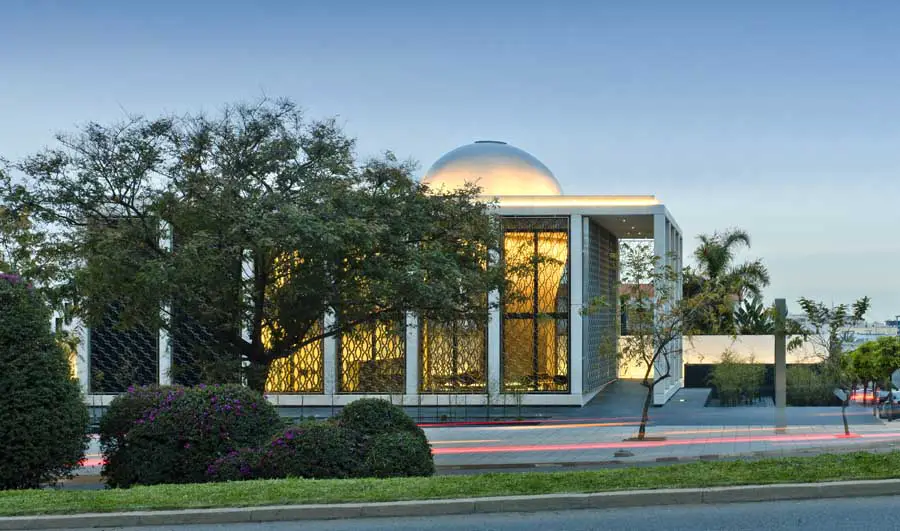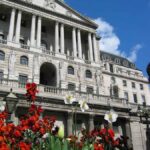Bank Building Design, Global Architecture Article, World Architectural Style Ethos
Bank Building Design Discussion
International Bank Design discussion by Professor Gary J. Coates
Mar 29, 2011
Bank Building Designs
Discussion regarding this Moroccan HQ property:
BMCE Regional Headquarters Morocco
Regional headquarters branches for Moroccan bank, BMCE, in Rabat and Casablanca designed by Foster + Partners in Morocco, Africa
Article for e-architect by Gary J. Coates, Professor
Victor L. Regnier Distinguished Faculty Chair
Department of Architecture
Kansas State University
Manhattan, KS 66506, USA
Buildings can be experienced and understood at three different levels: 1) the functional; 2) the typological (or cultural) and; 3) the archetypal (or existential/spiritual). The most powerful buildings, the ones that touch us most deeply, integrate all three levels coherently and seamlessly. Foster + Partners’ system for the design of energy efficient regional banks in Morocco work beautifully at the functional level. Yet at the deepest levels having to do with culturally situated forms and archetypes of meaning these buildings conflate form and meaning in ways that are disturbing at worst and inappropriate at best.
BMCE Regional Headquarters, Morocco, North Africa:
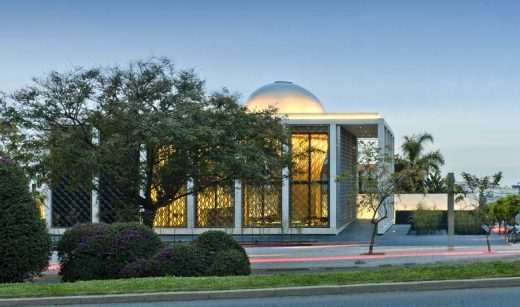
photograph : Nigel Young_Foster + Partners
Conceived as a “kit of parts” to allow for adaptation to different local contexts, all of Foster’s banks feature a dome that sits on top of a modular “cubic” glass and concrete frame base. To provide security and to block unwanted solar heat gain in this sunny Mediterranean climate the glazed walls are wrapped by special heat reflecting steel Jali screens based on traditional Islamic patterns.
To further increase passive cooling potential the banks also use earth-air tubes, which encircle the buildings, to pre-cool ventilation air before it enters the building envelope before exiting out of the oculus of the dome. Further connections with local place and culture are made by the use of local materials worked by local craftsmen, such as the ceramic tiles that cover the exterior of the domes and black granite and limestone materials that are used within the bank interiors. It is clear that sustainability and the integration of local building traditions and forms were driving forces behind the design.
BMCE Regional Headquarters, Morocco:

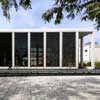
photographs : Nigel Young_Foster + Partners
Thus, these elegant and beautiful banks meet their simple programmatic functions using traditional forms and passive environmental control systems that are culturally situated and climatically adapted. It could be said that modernity and tradition are joined to create buildings that are both timeless and contemporary. So far, so good.
BMCE Regional Headquarters, Morocco:
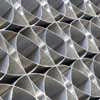
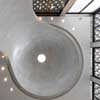

photographs : Nigel Young_Foster + Partners
The problem arises at the typological and archetypal levels. Within the context of the history of Islamic architecture the dome is not just a building element that induces upward air movement for passive cooling: it is a powerful symbolic form that signifies the eternal all-enveloping presence of Allah, the Divine Mystery that is without beginning or end.
What does it mean to have this ancient universal symbol of the divine physically swoop down from the heavenly realm to form a padded seat for customers to sit on while waiting for service at the nearby counter? Used in this way the Axis Mundi created by the dome and its oculus is degraded and desacralized. Do the architects and client wish to say that in these modest banks money is god and the customer is aligned with the divine simply by conducting financial transactions under the re-purposed “dome of heaven”?
Is money now sacred and are financial transactions now a new kind of liturgy? If so, then the design of these banks is brilliant. If not, as I suspect is the case, there is a terrible confusion of messages and meanings in these banks. At the cultural and archetypal levels, sacred forms are used in functionally appropriate ways that, at the same time, invert and undermine their traditional sacred meanings. A branch bank is not a mosque and a building with a very ordinary secular function cannot be somehow be sacralized by the use of familiar sacred forms. Nor should it be.
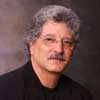
photograph from Professor Gary J. Coates
Professor Gary J. Coates, who is the Victor L. Regnier Distinguished Faculty Chair in the Department of Architecture at Kansas State University, has been recognized for teaching excellence by the American Institute of Architects and the Association of Collegiate Schools of Architecture. He has published five books as well as numerous articles in leading scholarly and professional journals and is a frequent lecturer at conferences and universities in the United States and Europe. In addition to his focus on sustainable architecture and urbanism he has a lifelong interest in sacred geometry and architecture.
BMCE Regional Headquarters, Morocco
Comments for this Bank Building Design article are welcome
International Architectural Designs
Architecture Debate : article by Adrian Welch – 2005
Architecture Context : article by Trevor Tucker. Sep 2010
Sustainable Architecture Design : article by Trevor Tucker. Aug 2009
Nature Architecture : article by Trevor Tucker. Sep 2009
Design Narrative : article by Lee Miles – Sep 2010
Sustainable Buildings – Building Issues : article by Adrian Welch
Banks and Offices
Bank and Office Architecture Articles
U.S. bank account remote opening
Redefining banking accessibility under Michael Gastauer
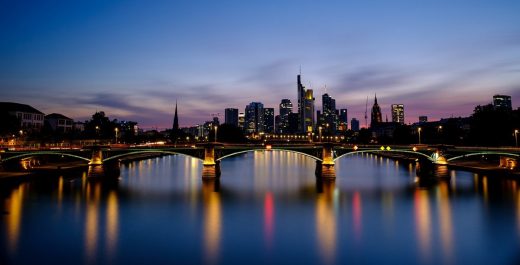
Comments / photos for the Bank Building Design – Financial Architecture Article by Professor Gary J. Coates USA page welcome

